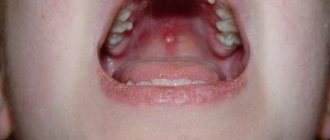14934
0
If your child complains of weakness and fever, and there are reddish spots on his face, congratulations, he most likely has chickenpox. Often, many parents themselves suffered from this disease in childhood and immediately begin to “art”, smearing their child with brilliant green. However, many questions are ignored. Some people are lucky and the child easily tolerates the disease, while others are not. In order not to risk your baby’s health once again and to be ready to respond to chickenpox in a timely and adequate manner, we suggest that you read this article, in which you will find out whether it is possible to go for a walk if children have chickenpox
Is it possible to walk if you have chickenpox?
Many parents believe that chickenpox is a harmless infection, since most children tolerate the disease quite easily. There are even especially “caring” mothers who go to visit an infected child in order to get over chickenpox as early as possible. For the same reason, some children's institutions refuse to impose quarantine during a chickenpox epidemic.
Chickenpox can be dangerous, since some children have great difficulty enduring such pathologies and suffer complications both during and after the illness.
Parents who have a democratic attitude towards their children should think about those children for whom chickenpox will cost their health, and stop wanting to infect others with chickenpox.
The answer to the question “is it possible to walk with chickenpox?” will be "NO".
It's best to stay home if you have chickenpox
About the pathogen
The incubation period of infection ranges from 14 to 21 days. This time is necessary for the chickenpox virus to gain a foothold in the body and prepare for further expansion. After incubation, the patient develops a papular rash, which transforms into vesicles and then into crusts. At the same time, discomfort appears in the area of the rash, general malaise, and the temperature rises. After illness, the child’s immunity becomes immune to the virus. Re-infection is possible only with a pronounced weakening of the body's defenses.
So is it possible to go for a walk if you have chickenpox to give your baby some fresh air? Or is walking still prohibited?
Why you can’t go for a walk - 3 important points
Let's look at the reasons.
- Chickenpox is not an easily tolerated infection for all patients. Some children have difficulty surviving smallpox. Already from the first days of the disease, they develop a high fever, which lasts for about a week; the whole body is covered with a profuse rash that is very itchy. Because of this, they eat practically nothing, sleep poorly, and languish from constant discomfort. Infections are especially dangerous for children with chronic pathologies and symptoms of immunodeficiency. No one is also immune from complications (for example, pneumonia or encephalitis).
- An adult can also get chickenpox. An infected child can infect an adult, and adult chickenpox is much more serious than childhood chickenpox. In adult patients, there is a high likelihood of complications, scars and cicatrices on the skin after a rash. Transmission of the virus to a pregnant woman.
- During pregnancy, a woman's body is especially vulnerable to infections. Even a common cold can cause serious complications for the fetus. Chicken pox, which a woman contracts in the first trimester, threatens the appearance of severe pathologies in the unborn baby. The disease can provoke chickenpox in a newborn immediately after birth. You should not listen to those people who say that you can walk outside with chickenpox. The patient is isolated from other people for 2-3 weeks. No walks, visits or receiving guests are also allowed.
General information about chickenpox
Some features of the disease:
- Rarely occurs in newborns and children of the first years of life. In this group of patients, infection is possible only in the case of intrauterine infection (TORCH infection) or at birth from HIV-infected mothers, when there is no natural protection by maternal antibodies.
- Attenuated varicella zoster vaccines can be used to prevent or suspect chickenpox infection. After vaccination, there is no protective regime (walks and visits to the garden or school are allowed).
- After an infection, stable lifelong immunity is formed.
- Adults, pregnant and lactating women, as well as people with immunodeficiency constitute a risk group, since their chickenpox is extremely severe, even fatal.
Is it possible to go outside if there is no temperature?
Lack of fever is not always a plus. Most often, this signals that the child’s immune system is weakened and cannot adequately fight infection. This “mild” form of chickenpox hits the skin and internal organs much harder.
The absence of fever during the course of the disease does not mean that the child can be allowed to leave home.
With this course of the disease, the infected person is not only capable of infecting others, but also getting complications himself. After all, the immune system does not fight the virus, the body is weakened, which means walking in the fresh air increases the risk of acquiring other diseases or worsening existing ones.
Dr. Komarovsky about walks in the fresh air with chickenpox in children
An authoritative pediatrician in our country, as well as in the countries of the former CIS. His experience in pediatrics is vast and his knowledge invaluable. Evgeniy Olegovich wrote many works on the topic of childhood and education, health and treatment. His TV show “Doctor Komarovsky’s School” has a large number of viewers. This is a person whose opinion in medicine is worth taking into account.
Can a child walk outside with chickenpox? Komarovsky E.O. in her advice on treatment and raising children, she notes that walking with chickenpox is necessary, as it strengthens the immune system and promotes a faster recovery. To do this, you should remember a few simple rules:
- A prerequisite for eliminating the possibility of infection of healthy individuals in society is to avoid all kinds of crowded places;
- At high temperatures, you should refrain from walking in the fresh air and ventilate the room as much as possible;
- You should not expose your child to hypothermia, as this can provoke the development of complications associated with chickenpox;
- Chickenpox is characterized by some degree of photophobia, so if your child goes for a walk wearing dark glasses, this will help reduce eye irritation;
If you live in a house on the ground and you have a plot, then the child can calmly, without the risk of infecting others, walk in the courtyard of the house. If you live in an apartment building, then as an option, you can consider walking on the balcony.
When can you go for a walk after illness?
The most dangerous time is the first 2-4 days of the disease. At this time, the infected person is actively fighting the virus and can infect others.
A weakened immune system devotes all its main forces to fighting chickenpox, and therefore the risk of contracting another infection or catching a cold is higher.
As a standard, strict quarantine must be observed for 5-7 days. During this time, the virus fades away and becomes harmless to others. However, many doctors advise quarantine for 2-3 weeks.
You can go for a walk after 9-10 days, but under the strict supervision of parents and without contact with the environment and other people.
You can go outside after illness 10 days after the first rash
General rules for walking
- Avoid crowded places. During illness, the risk of infecting others and getting a third-party infection by the infected person increases.
- The patient's skin is especially sensitive to UV radiation during illness. Avoid prolonged exposure to direct sunlight.
- For some time after recovery, you should avoid active games and physical activity. The body is still very weak for active actions.
- Avoid hypothermia, do not wrap your child in several layers of clothing. Dress strictly for the weather, choose clothes made from natural “breathable” fabrics.
- Swimming in rivers, lakes, and ponds is strictly prohibited until the skin has completely healed. At this time, there is a high probability of “catching” an infection, since the wounds on the body are open and vulnerable, and the immune system is not yet ready to fight a new infection.
Doctor's advice
Since chickenpox is a highly contagious infectious disease, general rules must be followed:
- If a child has chickenpox without a fever, it is prohibited to walk during the entire period of fresh rashes. This period averages 5-7 days from the moment the last element of the vesicular rash appears (with the exception of atypical forms).
- The child’s parents isolate him at home in order to limit the spread of infection (transmission route is through the air, infectiousness is almost 100%). Frequent ventilation in the room where the child is is acceptable. No specific disinfection is required.
- You should limit walks with your baby in case of direct contact with a sick person for an average of 10-21 days (the incubation period of the disease). This limitation is due to the fact that the child becomes infectious to others 2 days before the first clinical signs of the disease (rash, fever) appear.
- The risk of contracting chickenpox through close contact with an infected person in an open area is minimal. But restrictions are imposed, since the child spends a short time in public places (entrance, elevator) before going outside.
- It is required to limit the child’s attendance at kindergarten and school for the entire period of illness and for the duration of the incubation period due to the impossibility of eliminating the risk of infection.
- A child with chickenpox should go outside in winter only after all the crusts have fallen off (7-10 days after the last rash). Why? This restriction is imposed for preventive purposes, since in winter the skin is exposed to low temperatures, and therefore becomes more fragile. Cold exposure somewhat slows down the healing process of vesicles and can lead to their traumatization with the formation of a scar.
- Restrictions on walking are also imposed in order to minimize injury to the vesicles. If they heal on their own, they go away without a trace, but if the crust or element of the rash is torn off, an atrophic scar is formed in its place, which can only be removed by surgical methods.
Recommendations for mild forms of the disease
Many parents are interested in the question of whether it is possible to walk with children with chickenpox, given the absence of fever and other visible manifestations of the disease. Pediatricians, including the famous Dr. Komarovsky, believe that even with a mild course of the disease, you should not go for walks with your child. Thus, in the case of a mild illness with minimal rashes, the rules remain the same - possible contact of a sick child with healthy children should not be allowed.
How long is the walking restriction in effect?
General symptoms of the disease in children with chickenpox rarely last throughout the entire period of the disease, and usually disappear after 1-2 days of rash. However, a decrease in temperature is not an indicator of recovery and it is necessary to maintain a protective regime until the blisters gradually become covered with a crust (people remain contagious until all lesions are covered with it).
During the period of drying of the crusts, when there are no new rashes (7-10 days), you can go out with your child for short walks, but you must adhere to the following recommendations:
- In summer, you should not swim in ponds due to the risk of infection through injured skin.
- You should not immediately resume full physical activity after an illness. It is optimal to gradually increase the walking time over 2 weeks until you return to the individual norm.
In case of illness of a child with immunodeficiency, due to a weak immune response, it is necessary to increase the period of home isolation to 15 days. This limitation is due to the fact that after chickenpox the child’s immune system will weaken even more and the risk of contracting other infectious diseases will increase sharply.
Walking and visiting during the incubation period
Doctors, talking about why it is undesirable to go outside if you have chickenpox, draw the attention of parents to the fact that they should refrain from visiting guests during the period when the child is in the incubation period. The Varicella Zoster virus is very insidious; already on the fourth day after infection, it starts processes that sharply reduce immunity.
Yes, the baby is not yet contagious to others, but when the defenses are weakened, there is always the risk of another, no less dangerous, infection. Then the baby’s condition will worsen significantly.
Walks
A question often asked by mothers whose child has chickenpox is when can they go outside. Everyone has their own ideas on this matter, but doctors do not recommend doing this based on epidemiological considerations. During the first days of illness, the child should generally observe strict bed rest, so any walks are out of the question. At the height of the illness, when rashes appear and the temperature rises, it is better to stay at home, so the child will recover faster and there will be no complications.
Theoretically, after the child’s condition returns to normal, there will be no more temperature fluctuations or new rashes, and you can go for a walk. But it should be remembered that despite feeling well, the child remains contagious to other people for some time.
Therefore, it is still better to stay at home during this time so as not to expose others to the risk of infection. In principle, if it is possible to go out into the fresh air without interfering with people and take a walk in the distance, in nature, then you can do it. This can speed up recovery as walking in the fresh air is beneficial. You can also stand on the balcony, this will replace walking.
Walking when the condition improves and the crusts dry out
It has been noticed that the skin of children who have had chickenpox becomes especially sensitive to the rays of the sun. Therefore, when going for a walk for the first time, it is important to consider the following points:
- You cannot allow your body to become hypothermic on your first trip out. Any, even mild, infection significantly undermines the immune system, so there is always a risk of unwanted complications in the form of pneumonia and encephalitis.
- You should not wrap your baby up. If he sweats, the skin will immediately react with the appearance of new rashes. When dressing your baby, it is better to choose closed clothing that reliably protects the skin from the sun's rays.
- When going out for a walk, it is important to think through your routes in advance. It is better to line them up so that they bypass crowded places and run along the shady side.
- During exercise, it is important to prevent the patient from becoming excessively active, which can cause increased sweating.
For some time after chickenpox, you should avoid swimming in pools and ponds.
When you notice the first symptoms of chickenpox, you need to call a doctor at home. There is no need to go out and go to the clinic yourself. Chickenpox is an insidious infection, and airborne transmission contributes to its rapid spread. The virus is highly volatile and can spread hundreds of meters around in a short time, so a patient can infect everyone who is in his field of vision. The quarantine is closed only on the fifth day after the last element of the rash appears.
Dangerous period
Each patient develops chickenpox individually. Children are characterized by high fever in the acute period, rash, itching, and weakness. Chickenpox has several forms - from erased, when symptoms are practically not observed, to generalized with general intoxication of the body, severe disease and damage to internal organs. In any case, this is an acute viral disease, accompanied by an attack of pathogens on the entire child’s body. During the acute period (7–14 days), strict bed rest is indicated.
What are the dangers of walking for a child with chickenpox and those around him?
In order to answer these questions, it is necessary to distinguish between the problems of the danger of walking for the patient and for others. Chickenpox is an extremely contagious viral disease of the herpes type. It spreads by airborne droplets through mucous membranes when coughing, sneezing and even talking. Human susceptibility is 100%. You can even become infected from an infected person whose disease is still in the incubation period.
This disease is especially dangerous for pregnant women. A virus that has entered the mother’s body will inevitably be transmitted to the unborn child, which is fraught with serious deviations in the development of the baby. The danger to others explains the strict quarantine measures that are taken for this disease. The ban on visiting kindergarten and school is associated, first of all, with isolating the source of the disease from others.
In this regard, the outdoor stay of a child with chickenpox should be organized in such a way as to exclude his contact not only with other children, but also with adults. If the baby lives in a private house or the apartment has a balcony, it will not be difficult to organize the patient’s stay in the air. Otherwise, you should take it to a deserted place, a park, or out of town. Adults visiting the family or accompanying them on a walk should be informed of the risk of infection if they did not have chickenpox in childhood.
For a sick child, being outdoors during chickenpox is associated with certain risks. Please note the following:
- At the onset of the disease, the temperature is usually high. Doctors prescribe strict bed rest. During this period, the patient should stay at home.
- When the acute period passes, health improves, parents think that the child is strong enough to go outside. It should be noted that, despite obvious signs of recovery, the baby’s immunity has been seriously weakened. There is a real risk of catching ARVI or another infection. The child’s body may not have enough immune strength to cope with the associated infection, and complications will arise.
- A side effect of chickenpox is some hypersensitivity of the skin to ultraviolet radiation. This factor should be taken into account and not organize walks in bright sun.
- It is better to postpone active games and sports until complete recovery in order to save strength.
- If you have chickenpox, it is strictly forbidden to swim in open reservoirs and pools, as there is a high risk of infection and various dermatological problems.
What walks are allowed?
Definitely, if an adult fully understands why walking on the street is prohibited, then it is difficult to explain to a small child the lack of opportunity to be in the fresh air.
It is difficult for a child to sit within four walls for a day, and if we talk about a week or several, it is almost impossible. However, a child can be provided with fresh air without risking his health and exposing people to possible infection.
- Small “walks” on the loggia or balcony, which will create the illusion of no insulation;
- It is allowed to constantly ventilate the room with the child in it. In this case, the baby must first be “warmed” to prevent the addition of a cold;
- Allowed to go to the dacha or country house. You can walk there for a long time without risk to others. Provided there is no fever, you feel good.
For a walk, you need to choose clothes made from natural materials and soft fabrics. Excessive friction against fresh crusts and blisters contributes to the appearance of scars, the addition of a bacterial infection, and the development of a purulent process.
Adults and children find it difficult to withstand quarantine. However, following the doctor's recommendations ensures the normal course of chickenpox without complications. Then you can always make up time with long walks.
source
How many days after can you go for walks?
During an acute period of illness, it is better to stay at home. 5 days after the rash disappears, you are allowed to go outside. But the patient’s mother should remember the following:
- The immunity of a person who has had smallpox has not yet strengthened, so crowded places should be avoided.
- Patients should not be allowed to become hypothermic, but they should not be overwrapped either. Clothes should be selected from natural fabrics.
- It is necessary to stay away from sunlight, as the skin is highly sensitive after an illness.
- You should not immediately engage in outdoor games.
- To avoid infection in skin wounds in the summer, you should not swim until they are completely healed.
Immunity remains in the human body after illness and after vaccination against chickenpox.
If you can’t, but really want to?
But children, sitting at home with chickenpox, often very persistently ask mom and dad, grandfather and grandmother to allow them to walk at least a little, and it is very difficult to refuse such requests for 15-21 days. The child needs to be told why he should not go for a walk if he has chickenpox. Even a preschooler can understand the arguments of adults, but understanding is not always enough for a long time. If parents are still ready to give in to the patient’s requests, the following rules must be followed:
• do not go outside while the temperature is elevated, there are complaints of weakness, headache, but ventilate the apartment as often as possible; • do not visit crowded places, do not enter shops or various institutions; • if the patient lives in a multi-storey building, and you can only go outside through the entrance, walks are possible only on the balcony; • you can only go for a walk if accompanied by adults – it is difficult for a preschooler and even a teenager to resist various temptations on their own: communicating with friends, active games; • whether it is possible for a child to walk in the yard of a private house with chickenpox depends on what the weather is like - in rain, frost or strong wind; on a sunny summer afternoon it is advisable to refuse a walk, and it is important to ensure that strangers do not enter the yard without warning danger of infection;
• clothing must be appropriate for the weather - it is unacceptable to wrap the baby up, he may sweat, which will adversely affect the condition of the skin and increase the risk of catching a cold. For a walk, you need to choose things made from natural fabrics that do not restrict movement.
Important! You can swim in open water only after all the crusts have fallen off and the skin has completely healed, otherwise infection may occur due to a weakened immune system.











